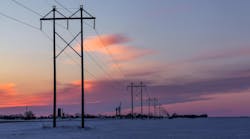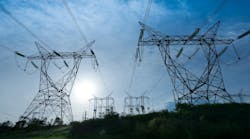Progress Energy Florida has selected a "preferred corridor" for potential transmission lines that predominantly follows the path of existing lines across nine Central Florida counties, minimizing the impact on the community and the environment.
"During the past year, we have actively solicited community input and suggestions about this project," said Jeff Lyash, president and chief executive officer of Progress Energy Florida. "We listened to that feedback. Overwhelmingly, people suggested we locate the new lines along or adjacent to existing lines wherever possible, to minimize the impact on nearby communities."
More than 90 percent of the preferred corridor follows existing rights of way. In limited areas, the existing right of way will need to be widened; in most other areas, no additional land will be needed. No more than 20 miles of new right of way will be acquired for the project, which measures nearly 200 miles long. All areas will require further study before specific route options can be identified.
The preferred corridor avoids new impacts in several environmentally sensitive areas, such as Brooker Creek Preserve in Pinellas County, the Rainbow River in Marion County, and Starkey Wilderness Preserve in Pasco County. "We are committed to being good stewards of the natural resources entrusted to our care," Lyash said. "While we have a responsibility to meet the growing energy needs of our customers and state, the environment is an integral part of planning, design, construction and operational decisions."
As population and energy use in Florida continue to grow, Progress Energy Florida is considering adding about 200 miles of transmission lines across nine counties to maintain reliability and to move energy efficiently to residents throughout the region and the state. New 230-kV and 500-kV transmission lines could affect Citrus, Hernando, Hillsborough, Lake, Levy, Marion, Pinellas, Polk and Sumter counties. Transmission lines are planned in three main segments, including from a proposed power plant in Levy County to the Wildwood/Leesburg area; from Levy County south to Hernando County; and from Pinellas County to Kathleen in Polk County.
As part of the company's Site Certification Application (SCA), to be filed in June with the Florida Department of Environmental Protection, Progress Energy must submit a preferred corridor for the transmission lines. That means the company must define, within one mile, where the line will ultimately be built. The preferred corridor varies in width from 300 ft to 1 mi. It does not represent the specific route of the transmission lines, which will be significantly more narrow than the preferred corridor. Specific route options will be selected in late 2008 and early 2009.
In selecting a preferred corridor from the dozens of options, the company had to balance many factors - such as community input, environmental impact, land use, cost, safety and reliability. As part of this process, the company initiated an innovative community approach a year ago that includes participation from residents and key leaders throughout the region. The Community Partnership for Energy Planning involves a cross-section of community leaders and representatives, including public officials, businesses, environmentalists, neighborhoods and economic development agencies, among others.
Thousands of residents of the potentially affected counties attended more than 30 informational meetings in the past nine months. The company also considered their opinions on the study areas. The communities' priorities were consistent. Feedback from residents suggested the company should select a corridor that affects the fewest homeowners, and, where possible, the company should build the lines along or adjacent to existing transmission lines or other utility equipment.
Plans call for the transmission lines to be suspended on two kinds of structures. The single steel poles are between 90 and 165 ft tall, depending on voltage; H-frame (two-pole) structures are about 120 ft tall. The structures would be spaced 700 to 1,300 ft apart, depending on the structure and the terrain.
After the SCA is filed with state officials in June, Progress Energy Florida will begin further studying the preferred corridor for specific route options. The route-study process involves intense research, including a review of current and future land use, environmental issues, existing utilities, homes, wetlands and other real-estate issues. Crews may conduct field or aerial research. As specific route options are defined - this fall and in 2009 - Progress Energy Florida will hold additional public informational meetings to share those options with residents.
Rights of way will be acquired beginning later this year and will continue for several years. Engineering and design work will begin in 2009; exact locations for poles and other structures will be known when that work is complete in 2012. Construction is planned to begin in 2012, with the project expected to be in service in 2016. The project will require approval by the Florida Public Service Commission and other agencies.

